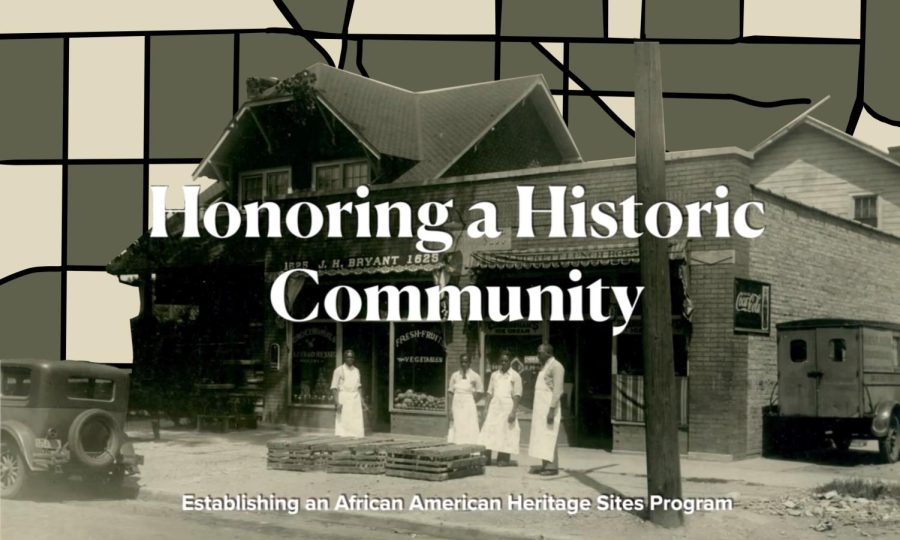Evanston History Center hosts virtual tour of Evanston’s eight African American Heritage sites
Local historian Dino Robinson and the Evanston History Center’s director of facilities Kris Hartzell presented eight designated African American Heritage Sites in the city.
October 6, 2022
The Evanston History Center hosted a presentation Thursday night to virtually walk residents through eight different Evanston sites that symbolized the role Black residents played in the city’s history.
The event, titled “Changing the Narrative: A Look at African American Heritage Sites in Evanston,” attracted 50 people. Local historian Dino Robinson and the History Center’s Director of Facilities Kris Hartzell led the tour.
The presentation comes after City Council’s June 2020 resolution to “preserve and honor sites important to the history of African American life in Evanston,” facilitated through Shorefront Legacy Center.
Jenny Thompson, the director of education at the History Center, helped organize the event and introduced Robinson and Hartzell. The heritage sites are essential for understanding African American history in Evanston, Thompson told The Daily.
“The built environment in the city of Evanston is both part of and a reflection of the city’s history and development, and African Americans in Evanston played a significant part in that history,” Thompson said. “Learning about Shorefront’s program to designate these buildings and sites as heritage sites helps people see the city in terms of how that history is represented in a physical way.”
The city places plaques in front of each property to clearly designate them as part of the eight African American Heritage Sites.
Robinson said at the event that Shorefront first aimed to designate a specific preservation district in Evanston, particularly in the historically Black 5th Ward, but ultimately decided to designate important sites throughout the entire city.
“We didn’t think that having one location as a preservation district would be ideal,” Robinson said. “We wanted to devise our own way of doing something, and we did.”
Among the eight properties is theButler Livery Stable at 914 Davis St., where entrepreneur Henry Butler established his business in 1891. Butler relocated to a building on Emerson St., which was torn down in 1989 to make way for a research park that was never built.
Hartzell cited the demolition of the Emerson St. site as an example of how the council’s resolution protects designated heritage sites from similar destruction.
“City Council withdrew the landmark designation so that they could build that new building there, which goes to show you that even if you do landmark these things, it’s no guarantee,” Hartzell said. “Which is another wonderful reason why putting (plaques) on the sidewalks helps immensely.”
Other heritage sites include the home of Evanston’s first Black Mayor Lorraine H. Morton and the home of Maria and George Robinson, Evanston’s first known Black residents.
Residents can see a map of the eight sites and nominate new sites on the Evanston Heritage Sites’ website.
Thompson told The Daily that the event aimed to emphasize that organizations like the History Center and Shorefront are working to preserve lost parts of Evanston’s history.
“We just want to share the work that’s being done related to this specific project,” Thompson said. “and also to expand people’s understanding of the city’s history and the contemporary work that’s being done to preserve that history..”
Email: [email protected]
Twitter: @saullpink
Related Stories:
— Butler Residence and Express Service named new African American heritage site
— Home of Evanston’s first black resident named new African American heritage site
— Local historians win award for report on Evanston’s history of racial discrimination


